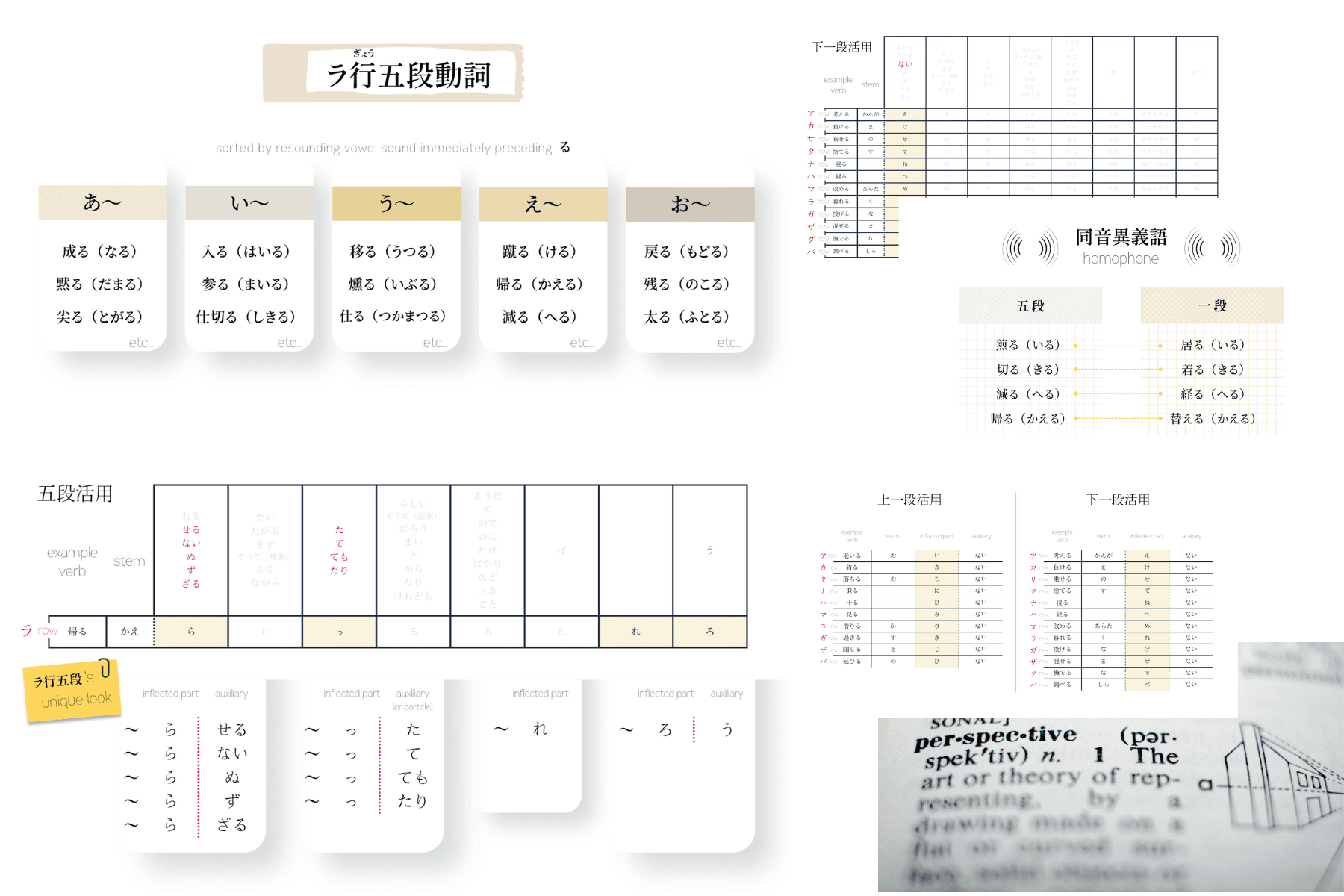Dead-simple Japanese Conjugation Tables
Finally Conjugate on the Fly
Japanese has some of the most straightforward conjugation you could possibly imagine; the way it’s taught, though, is a complete mess. Turn your understanding of conjugation right-side up with our intuitive conjugation modules and sail through to clearer thinking in Japanese.











Frankenstein-like appendages no more.
One of the biggest obstacles for early Japanese language learners is making sense of conjugation.
Of course, intermediate and advanced learners also share in these struggles, and most really get a sense for how oddly they’ve been taught when they ask their Japanese friends for help. Haven’t experienced this yet? Ask a Japanese friend about so-called ru-verbs, or u-verbs and be prepared for the blank stare to follow.
Ru-verb? U-verb? What are those? Add -tte… add, i, or is it い? Eh? What the what?
Mary Shelley did not write Japanese grammar books for a living, but with the way Japanese grammar is taught in nearly all instances, you’d think somehow she served as inspiration.
The trouble is, most Japanese language learning has been historically designed to get learners up and running fast. And, sometimes that works. If you’re motivated, a quick read, and blessed with a saint of a teacher who can teach in the margins, you can absolutely learn basic functional Japanese by memorizing the need to to attach this to that, swallowing more than your fair share of abstract conjugation rules, and drilling patterns forever like when you learned how to spell as a ten year old. When all is said and done, congratulations… you can now buy things at the 7-Eleven. Or, pass the JLPT. Wonderful. Or, not.
The trouble with this sort of teaching is it sets learners up to fail. Over, and over, and over again.
IF beginners can manage the hefty intellectual weight of remembering all the conjugation “rules” set out for them, they still inevitably hit a massive wall when it comes to reading and writing. Or, simply moving forward with their learning. Japanese learners who never make it past textbook, #2, or a “few hundred kanji” are legion. How many people do you know who say they “get by?” That they “know enough.” That they “tried, but couldn’t.” That does not have to be you.
With our first language, we soaked up the “rules” of grammar rather naturally. This IS also possible when learning Japanese as a second, or third, or fourth language. The key to proper learning is to slow down your learning.
Measure twice, cut once.
Master the slow dribble first, then worry about passing the basketball between your legs.
Barbeque is always better slow and low. So, is language learning. Using Frankenstein-like shortcuts to learn Japanese is silly. ESPECIALLY, when there are better more natural shortcuts that WILL make sense every day of the week, and without the need to memorize more than the same conjugation map everyone learns in Japan.
At Maplopo, we teach Japanese conjugation the way it is taught to those who grow up with the language; we use naturally flowing conjugation tables, and occasionally bend the visuals to make things even more clear. Everything is taught in English, and we address just about every why you could possibly dream up so you are never confused… never left behind. And, because everything is recorded and taught in bite-sized chunks you can learn on the fly as well as you self-study your way to more natural Japanese.
Along with our grammar modules, our conjugation modules are among our learners’ most favorite things, and we have beginning learners as well as full-fledged Japanese translators telling us they have turned on numerous lightbulbs, and cleared away tonnes of mud.
Give the videos on this page a spin. They’re mashups, but they’ll show you want you’re in for when you learn with us.
Let’s leave Frankenstein to Abbott & Costello why don’t we? We have some real learning to do, right?